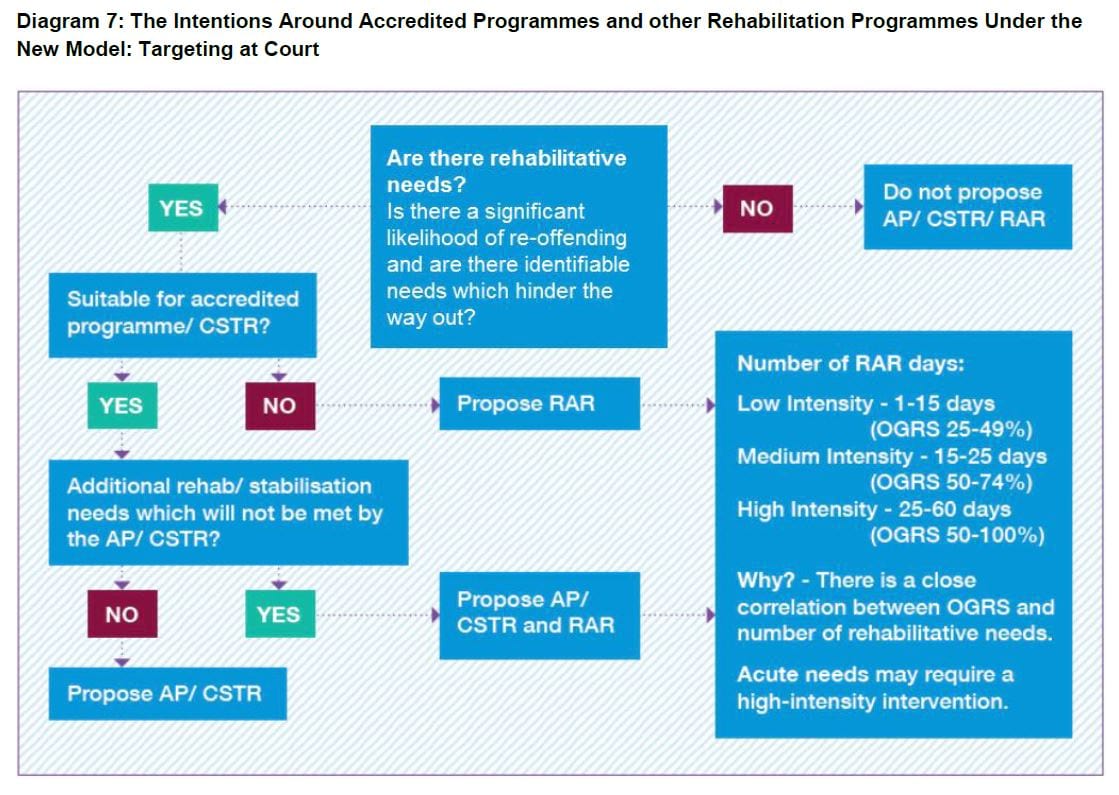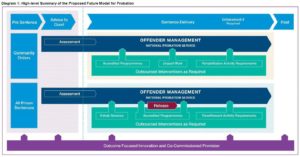This is the third post in a new blog series in which I am working through the detail of the main topics in the operating blueprint for the new probation system which HMPPS published on 14 June.
Today, I am focusing what we know about how the next iteration of Transforming Rehabilitation (now known as the probation reform programme) will work in relation to: rehabilitation and accredited programmes.
Rehabilitation
It is heartening to see the HMPPS dedicating a separate section of the blueprint to rehabilitation (desistance is still a mainly foreign concept to the MoJ, although the word does crop up three times in the 66-page blueprint). Rehabilitation, to most of us should either be the primary focus of probation work or at least share top billing with protecting the public. However, the Probation Inspectorate made it abundantly clear that the whole concept of rehabilitation was more or less abandoned under TR. Not only were most CRCs rarely focused on rehabilitation but many NPS divisions were found to be focused almost totally on public protection while doing little reducing reoffending work.
The blueprint re-states that rehabilitation is a primary function of probation and sets out a number of key design principles including:
- Accredited programmes are the intervention of choice for those who are eligible.
- Optimise use of Community Sentence Treatment Requirements (MHTRs, ATRs, DRRs).
- There will be a mandated core set of interventions that will be available for those with a RAR and for those on Licence. These interventions will address the areas of need either strongly associated with reoffending or to provide the stabilisation an individual needs to focus on other issues.
- Risk-Need-Responsivity principles should be followed when selecting interventions, including both strengths-based, and trauma-informed approached where relevant.
- Interventions will have various levels of intensity to reflect the varying complexity and acuteness of need that is commonly occurring in the probation caseload. The number of days proposed will reflect this and, within this, delivery should be individually tailored to reflect a person’s progress. •
- Providers will be expected to tailor design and delivery of these interventions to reflect the needs of specific cohorts where the evidence shows that different approaches improve outcomes. The cohorts in scope are: women, young adults, those with learning disabilities and BAME groups.
The graphic below shows HMPPS’ expectations.
Accredited programmes
The blueprint section on Accredited Programmes reminds us that those “Innovation Partners” (many of whom may be the same companies who currently operate the CRCs) who win the 11 regional contracts in the TR2 competition will be expected to deliver both unpaid work and accredited programmes.
The blueprint emphasises that (unlike the present situation) every offender should have timely and local access to any accredited programme needed to address an identified criminogenic need.
Innovation Partners will deliver both Thinking Skills Programmes (TSP) and Building Better Relationships (BBR). Both programmes will be subject to impact evaluation in 2020 (it is to be hoped that they prove more effective than the accredited prison Sex Offender Treatment Programme). The NPS will maintain responsibility for programmes for people convicted of sexual offences as well as for offenders convicted of extremism or related offences.
There is clearly still considerable debate around the subject of accredited programmes within HMPPS since TSP and BBR are the only two programmes specified in the blueprint although:
“we will encourage the delivery of additional Accredited Programmes where there is an identified need, if Innovation Partners are able to demonstrate a secure delivery model, which ensures timely access to the programmes”.
The blueprint also makes it clear that Innovation Partners will be required to deliver new Accredited Programmes as they become available and have the potential to design, develop and test new programmes in partnership with HMPPS.
Thanks to Andy Aitchison for kind permission to use the header image in this post. You can see Andy’s work here.






